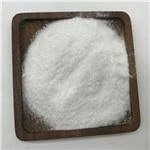Chemical Treatment in Cooling Towers An Essential Practice for Optimal Performance
Cooling towers are crucial components in various industrial processes, providing essential heat rejection and maintaining optimal operational temperatures. However, without proper maintenance and management, these systems can become breeding grounds for biological contaminants, corrosion, scale formation, and fouling. To mitigate these issues, chemical treatment is an essential practice that ensures the efficient and safe operation of cooling towers.
The Importance of Chemical Treatment
Chemical treatment in cooling towers addresses multiple concerns that can adversely affect performance and longevity. One of the primary challenges that cooling towers face is scale formation, which occurs when minerals in the water, such as calcium and magnesium, precipitate out due to changes in temperature and concentration. This scale can accumulate on heat exchange surfaces, reducing heat transfer efficiency and leading to higher energy costs. By employing scale inhibitor chemicals, operators can significantly reduce the risk of scale buildup, thereby maintaining optimal heat exchange efficiency.
Another significant concern is biological growth within the system. The warm, moist environment of cooling towers provides an ideal habitat for bacteria, algae, and other microorganisms. If left untreated, these biological contaminants can lead to fouling, causing blockages in system components and degrading overall performance. Moreover, the presence of certain bacteria, such as Legionella, can pose health risks to workers and surrounding communities. Biocides, such as chlorine or bromine, are commonly used in chemical treatment programs to control microbial growth, ensuring a safe operating environment.
Corrosion Control
Corrosion is yet another critical issue in cooling tower systems, leading to material degradation and potential failures. Factors contributing to corrosion include the chemical composition of the makeup water, temperature variations, and the presence of oxygen. Corrosion inhibitors are added to cooling water to protect metal surfaces, forming a protective layer that minimizes oxidation and prolongs the lifespan of system components. It’s essential to choose the right inhibitor, as different metals react differently to various chemicals. This tailored approach helps in maintaining the integrity of the cooling system.
chemical treatment in cooling tower

The Role of Water Treatment Programs
A successful chemical treatment program typically involves a comprehensive water treatment plan that includes regular monitoring and analysis of water chemistry. This involves measuring parameters such as pH, conductivity, and the concentration of specific ions and chemicals. Based on these analyses, operators can adjust treatment protocols to align with the specific conditions of their cooling systems. Additionally, periodic blowdown schedules are implemented to remove concentrated contaminants from the cooling water, further maintaining water quality.
Environmental Considerations
In recent years, there has been a growing emphasis on environmental sustainability and regulatory compliance concerning chemical use in cooling towers. Many industries are moving towards more environmentally friendly alternatives, such as biodegradable biocides and non-toxic scale inhibitors, to minimize their ecological footprint. Furthermore, adhering to local and national regulations regarding chemical discharge is crucial in preventing environmental contamination and ensuring compliance.
Conclusion
Chemical treatment is a fundamental aspect of cooling tower management that significantly enhances operational efficiency and extends equipment lifespan. By addressing scale formation, corrosion, and biological growth, proper chemical treatment ensures reliable performance while safeguarding health and safety. With advancements in treatment technologies and a focus on sustainable practices, operators can navigate the complexities of cooling tower maintenance effectively. Incorporating such measures not only optimizes energy use but also contributes to environmental stewardship, paving the way for responsible industrial practices in the future. Through effective chemical treatment strategies, cooling towers can continue to play a vital role in industrial processes while meeting the demands of an increasingly environmentally-conscious world.

